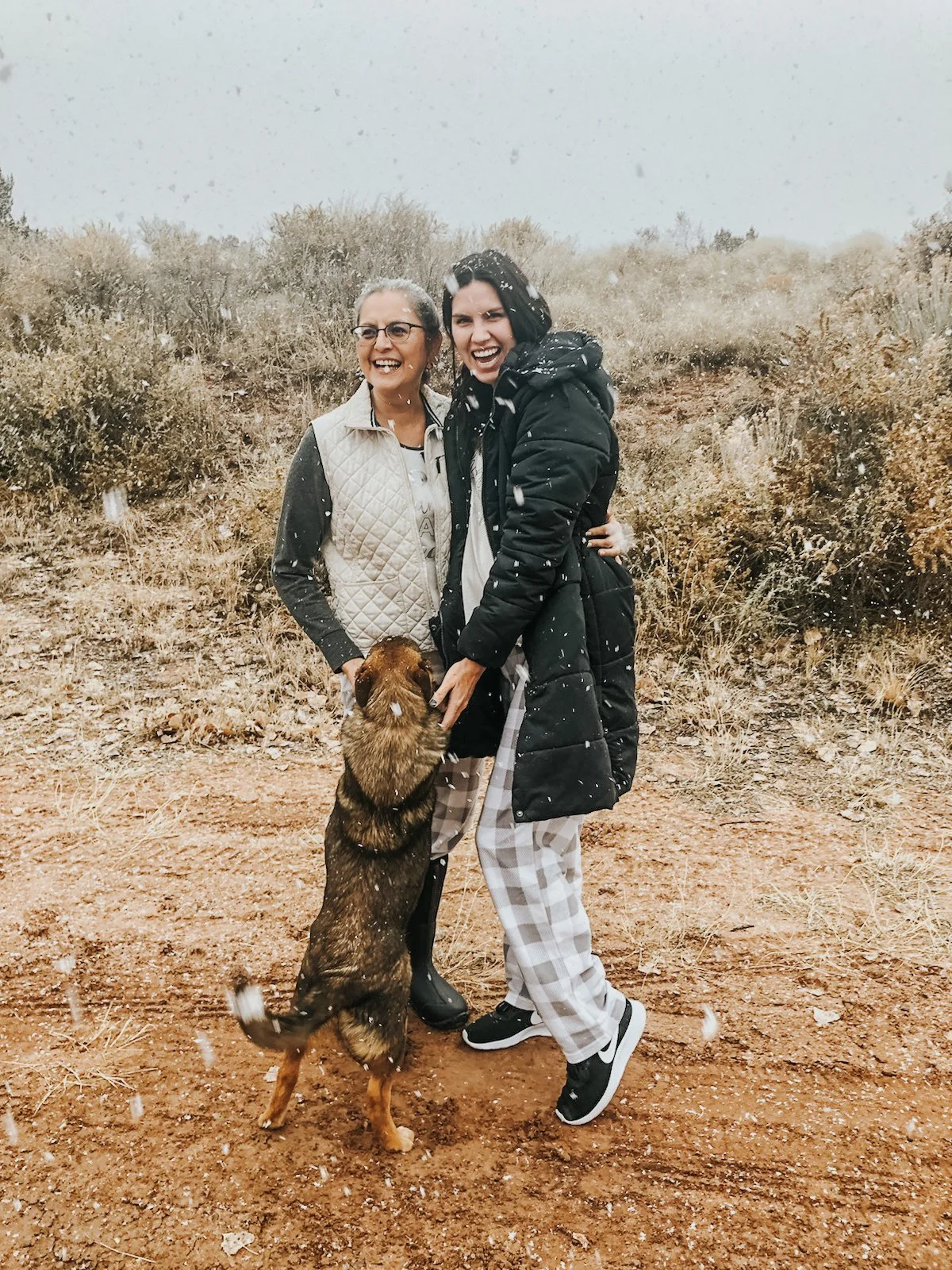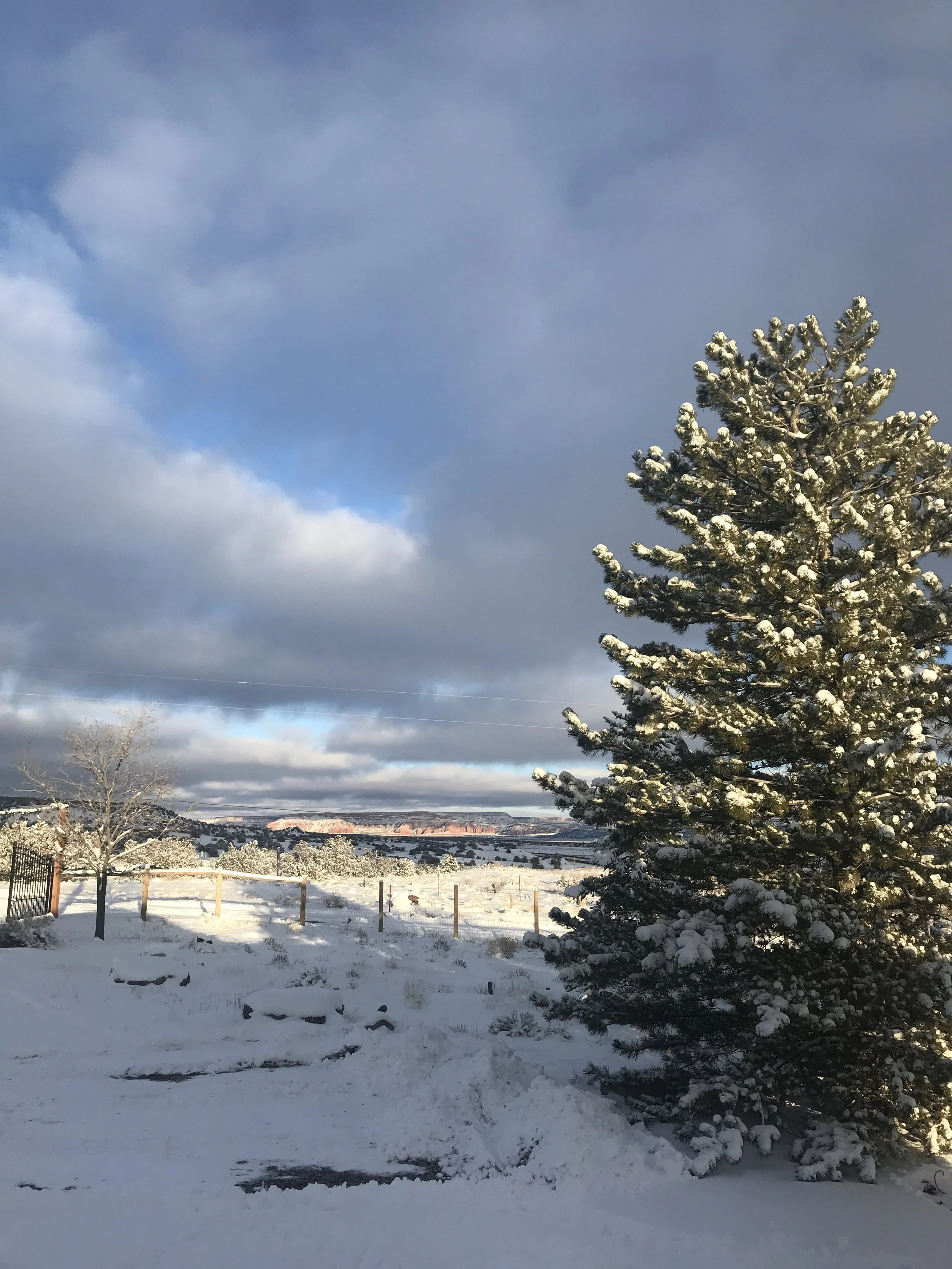Merry Christmas on Navajoland
Merry Christmas on Navajoland! Yá'át'ééh Késhmish
As most of you know, my family and I are Navajo. We’ve lived near the same piece of land in Northern Arizona for many generations, and here we’ve celebrated Christmas in our own way together. We celebrate Christmas like many traditional Americans do—We decorate a Christmas tree, attend a Christmas Eve service at church, exchange gifts and have a special meal with our extended family. But there’s more to Christmas on the rez than your average American celebration and some of our traditions include the following.
Celebrations at the Chapter House
Chapter Houses are located in central areas around the reservation and serve as administrative and communal meeting places for the people. There are celebrations here for Christmas that serve a traditional meal of mutton, squash, steamed corn and fry bread.
String Games
String Games are a winter storytelling activity that adults teach the children around Christmas time. The string games are stories that you act out in patterns by intertwining hand movements with a string. Some of the hand movements are easily mastered, while others require skill and patience to learn. In the beginning when the Navajo told these stories, they used the spun wool as well as mohair in order to play these games. Today, the Navajo people use store-purchased cotton twine. The string games are made up of various weaving and braiding techniques as well as knot tying. In traditional families, string games are a way to gain wisdom. The games are played during the Winter only because this is when a spider is quiet or sleeping. They do not play them during the summer as well as the spring because the spider is considered by many to be a holy being to be respected. In my family the games aren’t so much about wisdom as they are about fun. All the grandmas sit together with their strings, trying to one-up each other about who knows the most games! My own grandmother suffers from some dementia, but the muscle memory in her hands remains. She’s able to remember so many games and it’s one thing she loves to teach all the grandchildren about.
Shoe Games
Keshjee,' the Navajo Shoe Game, is centuries old as a game of choices, represents life and the fact that the natural order of things cannot be changed. Not every choice can be correct, but the lessons are learned and experience is gained. Neither lying or cheating can change the outcome and the payment of a fee of yucca stems is still required.
The Shoe Game is a game played in winter. A ball, usually made of wound yucca root, is hidden within one of several moccasins. The moccasins are lined up and the players try to guess which one has the hidden ball. In mythical folklore, the first animals played this game. Players take on the identities of these animals and sing songs about them.
Fry Bread and Tortillas
Most people know what traditional tortillas taste like, but Navajo tortillas are slightly different. Made from scratch and by hand, my grandma’s are truly the best. Slightly thicker and more “pillowy” they make special occasions feel truly special. We also eat fry bread which is one of everyone’s favorites. Fry bread is a flatbread that’s fried in oil, shortening or lard. Several tribes have their own variation on fry bread, but most Navajo-inspired fry breads are made with flour, water and salt and don’t contain any yeast, using baking powder as the leavening agent. We make stew and brew Navajo tea—which is a tea made from brewing the plant greenthread and has been enjoyed by generations. Another popular and delicious winter food is Blue Corn Mush. Made from roasted blue corn, the ash of juniper and water. Similar to porridge or oatmeal, this is a very nutritious and amazingly comforting food that many Navajos associate with winter and special occasions.
My mom and I being greeted by my grandma’s dog on the first snow in 2019
View from my parents home. Off in the distance you can see the red rocks of Lupton AZ.
Photo a few years back of frybread, stacked with mutton and green chile and my cute sister excited to eat!



